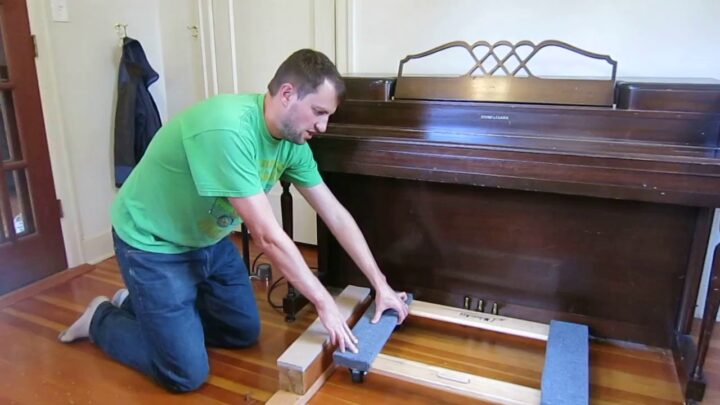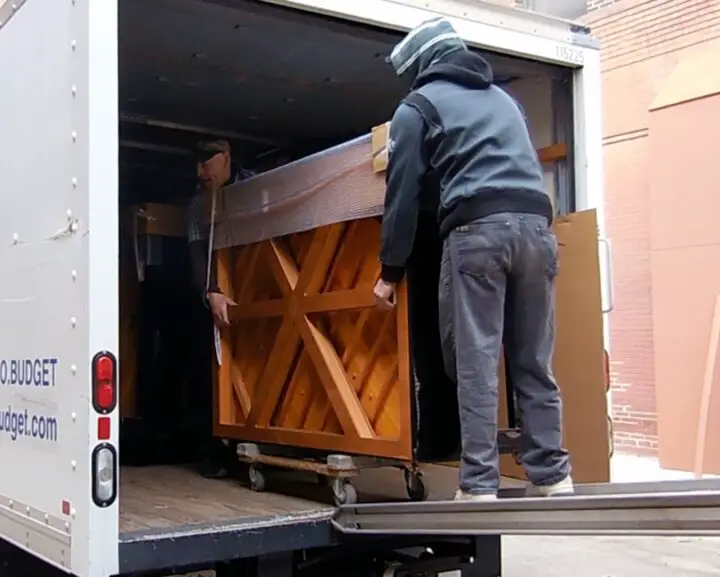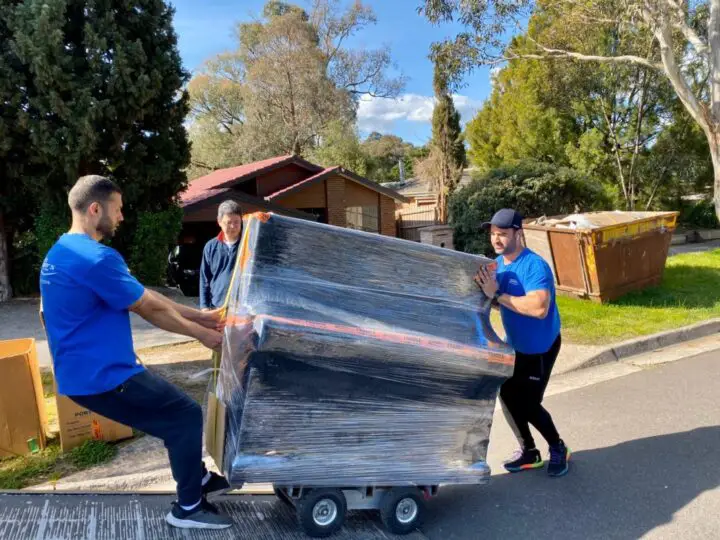How to Move a Piano

If you’re considering moving your piano below a tricky staircase by yourself, our first advice is to reconsider. Pianos are massive and weigh tons of pounds that could harm you during collisions. For this reason, you should get professional help.
However, if you’ll be transporting a large piano without the complications of an awkward stair, a DIY option is possible with the appropriate measures.
Read on to learn how to easily move a piano with the perfect tips, lifting materials, and equipment.
1. Protective and Lifting Gadgets to Move a Piano

The massive size of an upright piano means you can’t do the heavy lifting without the appropriate lifting, wrapping, and protective gears. So, before engaging in such a huge task, consider getting the following equipment at hand:
- Work Gloves: when lifting, you need protective gear for your hands. These work gloves should be thick and cover your arms properly.
- Dolly: You’ll find different types of dollies in the market, but this one is designed with four wheels to help you move the large instrument without damaging the floor.
- Dolly Straps: it helps you secure the keyboard on the dolly. This way, it doesn’t move when you transport it.
- Skid board: This is huge plywood padded heavily and placed on the dolly to transport the large musical gear easily.
- Cover blankets: this is a piece of material that protects your piano surface from scratch during a collision and bumps or tape and strap marks.
- Shoulder harness: they help you position your legs and shoulders appropriately to prevent injuries.
2. How to Move an Upright Piano
Since you can identify the equipment needed for heavy lifting, it’s time you figure out how to safely move a piano the right way.
2.1. Measure the Upright Piano
The actual size and dimension of large musical gears like this help you move them out and into your new home. Upright pianos differ from Grand ones since you can’t completely dismantle them. Apart from this, its size and overall measurement may vary depending on the type you own. Regardless, an upright piano will typically have its measurement as:
- Height: 110cm to 135cm
- Width: 145cm to 150cm
- Depth: 60cm
- Weight: 400 to 600pounds
2.2. Clear Exit Paths for Movement
The chances are that small home fittings or large furniture will get in the way of movement. To avoid this, move them aside before rolling your large instrument from its spot. Also, make provisions for your kids so they don’t interrupt the whole process.
2.3. Remove Piano Jewelry
The most common piece of jewelry on an upright keyboard is called a caster or roller. It has a metal build to help you conveniently hold the large keyboard. However, you should remove it before shipping your musical gear because its metal form means it can damage the flooring.
2.4. Wrap It Up
You don’t want to place this expensive instrument in a mover’s truck without any protection. So, get your furniture pads and use them to shield the piano properly before taping. Use only dense and bulky blankets that won’t tear easily. Also, keep the tape away from the surface of the keyboard.
2.5. Fix It on the Trolley
For this task, you must put on work gloves and ask help from people around you. Once you’ve successfully placed it on the trolley, secure the furniture pads with a strap. Then, slowly wheel the trolley through the exit paths to the moving van.
2.6. Transporting with a Ramp
If your piano is above the stairs, you need a ramp to move it. But, make sure you only use metal staircase ramps to avoid injury. Also, get at least four helpers, two at the back pushing and two holding its weight from the front to keep the piano from sliding down the stairs without a guide. Move as slowly as possible until you get to a leveled pavement.
2.7. Strap the Piano in Mover’s Van

Once you’re close to the truck, use a truck ramp to place the large musical instrument in the truck. Make sure it sits against the truck. Then, use the ropes or strap in the van to fasten the keyboard on the wall. Make sure the ropes are tight so the keyboard won’t shift on the road.
3. Moving advice for your large instrument
Although you already know how to transport an upright piano, you should also keep in mind some safety precautions to avoid injuries when transporting the piano to the van. Some safety considerations to keep in mind includes:
3.1. Don’t lift large pianos without lifting gadgets
By now, you know how hefty this musical gear is. So, you need every helpful lifting, wrapping, and protective gadgets to keep you, your helpers, and the flooring safe during the transit.
3.2. Don’t use a piano caster (if any)
This equipment only serves a decorative purpose. While it may be a sturdy decorative wheel that keeps the piano sited comfortably on the floor, it is not floor-friendly. So, make sure you remove it and use a dolly, trolley, or ramp.
3.3. Don’t move too fast
Remember, this instrument weighs tons, and since you already know how big it measures, it’s evident transporting it isn’t a one-man job. No matter where you hold the keyboard during the move, make sure you move slowly, a foot at a time to avoid unintentional bodily and floor injuries.
Conclusion

Transporting a piano, whether a small or large one, successfully is only guaranteed when you take the right precaution. Technically, the DIY route will be impossible without the right equipment. If you live in Boston and still don’t feel assured of a DIY route even with the right lifting gadget, get piano moving Boston expert services at https://starkmovers.com/services/piano-moving/ to get the job done.
